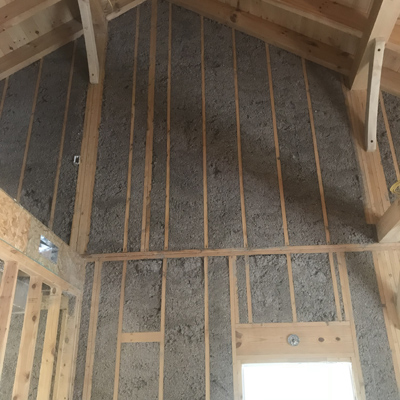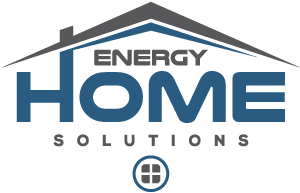Insulation Options
When we look at the various types of insulation available, it is striking how many options are available today. Energy Home Solutions can help you pick the right material for your budget, sensibilities, and application.
Cellulose vs Fiberglass
We’re going to focus in this article on the two most common types of insulation: fiberglass and cellulose. These two insulation types are available either as loose fill (or blown-in) or as solid sheets available in rolls or cut into batts.
Other more expensive insulation options include: rock wool, XPS foam board, EPS, polyisocyanurate, and various types of spray foam. They each have their advantages and disadvantages that lend them to particular applications.
Spray Foam
Despite the prevalence of fiberglass and cellulose insulation, we are seeing more homeowners choose spray foam insulation. Spray foam is significantly more expensive, but offers superior air sealing, noise suppression, insect control and greater insulation power. AirKrete spray foam in particular has exceptional performance, health, and environmental benefits.
Nevertheless, cost is always an issue, and many homeowners will continue to choose either fiberglass or cellulose. So let’s take a closer look at these two very common options.

Dense pack cellulose insulation blown into the wall cavity and trimmed back flush with the framing studs.
About Fiberglass Insulation
Fiberglass is made of glass that is melted and spun into fibers like cotton candy. It is commonly installed as batts in walls and in basements & crawlspaces, and blown-in as loose fill in attics.
Some characteristics and benefits of fiberglass include…
- Easily and readily available
- Familiar to most homeowners and contractors
- Similar cost to cellulose
- Similar R value rating to cellulose
- Less effective at preventing air penetration
- Lower effective R value in real world applications
- Less equipment required to install
- May require 2×6 walls to meet code in some locations
- Less flammable than older generation cellulose products
- Possible health issues if fibers are breathed in
About Cellulose Insulation
Cellulose insulation is made of densely packed recycled paper including newsprint. It is commonly blown in wet to specific densities and then trimmed back flush with studs in walls, and blown-in as loose fill in attics.
Some characteristics and benefits of cellulose include…
- Similar cost to fiberglass
-
Similar R value rating to fiberglass
-
May require more equipment to install
-
More effective due to lower air penetration
-
Less likely to be moved by air currents in attic
-
Better resistance to rodents, insects and other pests
-
Greater sound suppression due to density
- Works better at extreme temperatures
- Made of much higher % of recycled products
- Requires much less energy to produce
Which Should You Choose?
We would be happy to visit and inspect your site, talk about your budget, goals, and concerns, and make a recommendation. Please don’t hesitate to give us a call or request an estimate here online.
Call us at
423-823-9006
